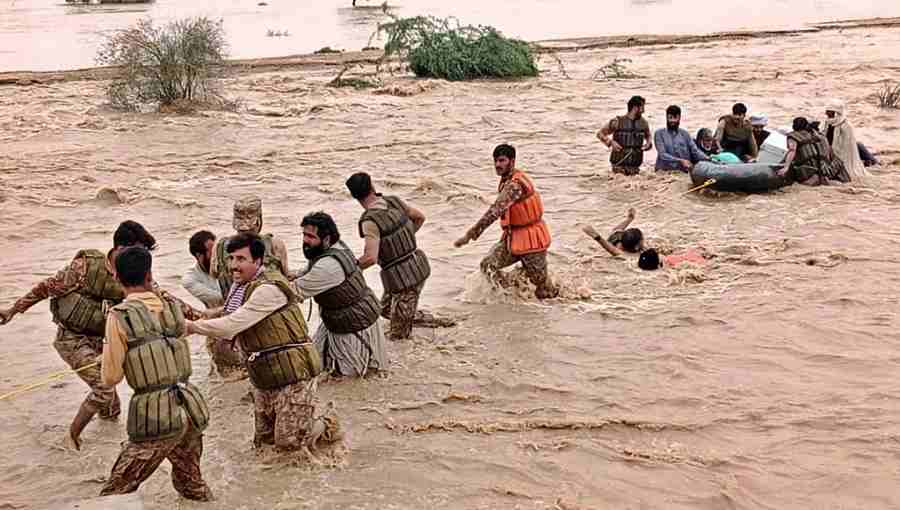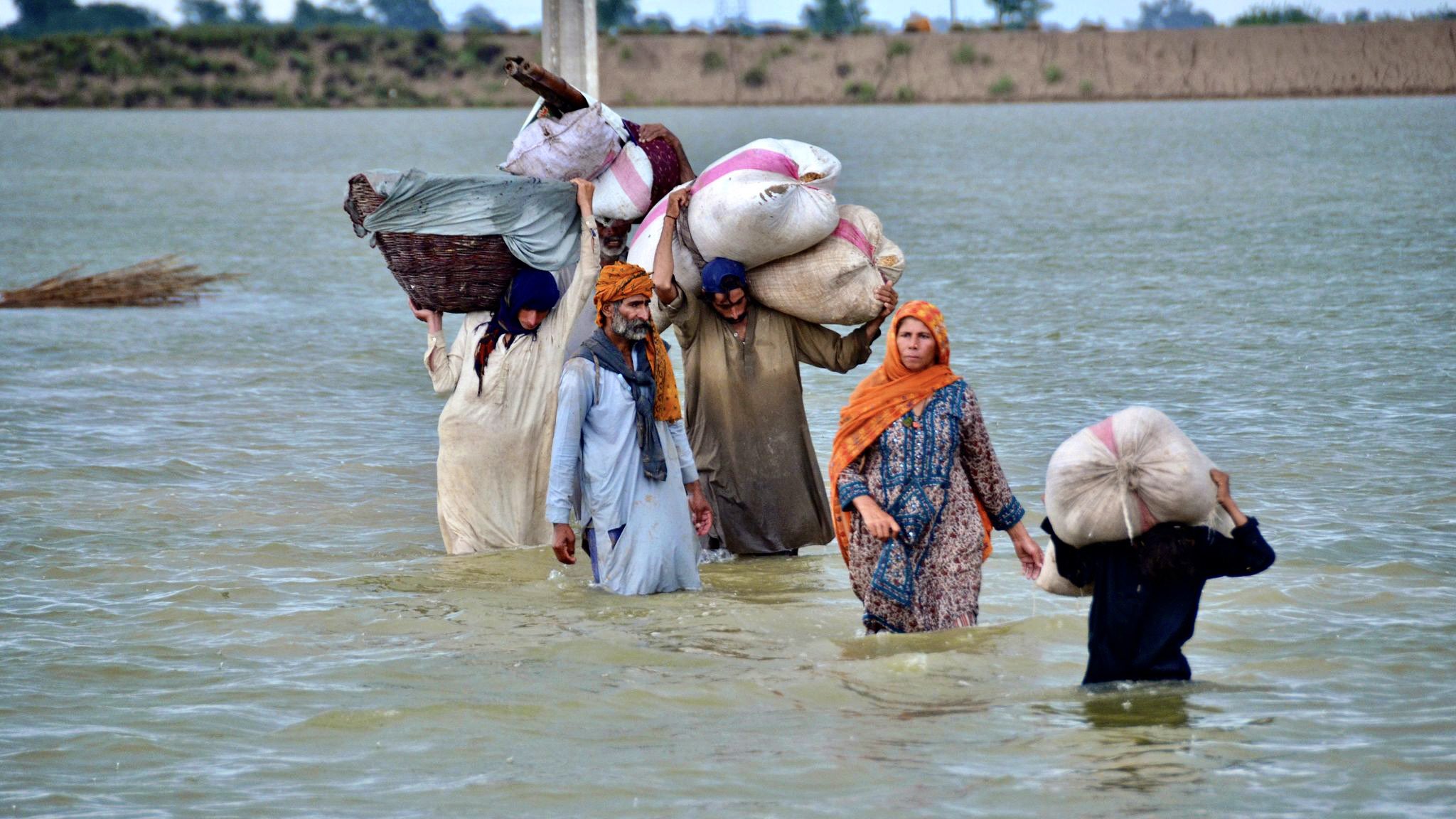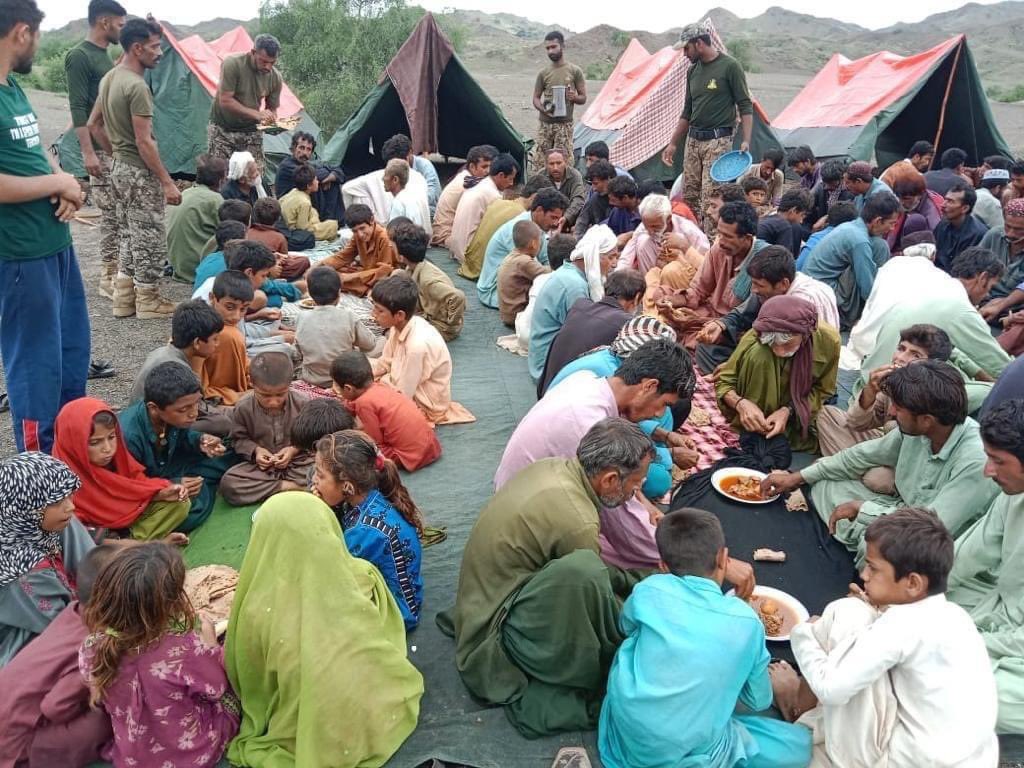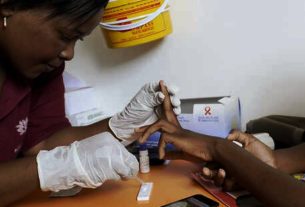Mon 05 September 2022:
An worrisome situation now exists in flood-affected areas, with hundreds of thousands of flood-affected individuals, many of whom are forced to live under the open sky, struggling with hunger and disease, it was reported on Sunday, DAWN reported.
Since July, 660,120 people have reported various diseases at government-run medical camps in flood-affected areas, according to the most recent July-September health department data.
The stats show that skin ailments and diarrhoeal diseases are rampant in flood-affected areas — a total of 149,551 reported with diarrheal diseases while 142,739 people reported with skin infections.
The officials recorded 132,485 cases of acute respiratory disease, 49,420 cases of suspected malaria, 101 cases of snake-bite and 550 cases of dog-bite.
🇵🇰PAKISTAN: Starving flood victims face infectious diseases under open sky.
An alarming situation currently prevails in the flood-affected areas; hundreds & thousands of flood-affected people, live under the open sky, are grappling with hunger & disease, #PakistanFloods2022 pic.twitter.com/VX3E1nDknc
— INDEPENDENT PRESS (@IpIndependent) September 5, 2022
Govt data says over 600,000 people report with various illnesses at medical camps
There were 185,274 cases of other illnesses.
In an interview on Sunday, Health Minister Dr Azra Fazal Pechuho stated that over 47,000 pregnant women were in shelter camps in the province.
Hundreds and thousands of people had contracted various diseases after the floods, she added.
According to officials, over 15,000 cases of skin infection cases, around 14,000 cases of diarrhoeal diseases and more than 13,000 cases of acute respiratory illnesses are being reported daily at government-run medical camps.
More evacuations as water level in Manchhar Lake continues to rise
Water levels in Sindh’s Manchhar Lake and parts of the Dadu district were on the rise on Saturday as the country struggled in the face of devastating floods, which have claimed over 1,300 lives since mid-June, and authorities prepared for more evacuations from areas at risk of flooding.
According to the official in charge of the irrigation cell for Manchhar Lake, Sher Mohammad Mallah, the water level in the freshwater body had risen to 125 reduced levels (RL) by Monday afternoon, up from 123.2RL recorded yesterday night.
He told Dawn.com that the lake’s protective dykes at RD 80, 75, 20 and 10 were “washed over” by waves and strong winds.
A dyke of Manchhar was breached on Sunday in face of the threat of densely populated areas of Sehwan and Bhan Saeedabad being flooded.
Numbers much higher
Workers engaged in relief efforts in the flood-hit districts, however, believed that the actual number of cases was much higher as there were still several places in the province where the government was yet to reach and start relief operations.
“One of the major challenges currently being faced in the disaster areas is lack of shelter. Today, we have visited Mirpurkhan, Tando Muhammad Khan and Tando Adam but couldn’t see a single government-run relief camp and people were forced to live under the sky,” Dr Abdul Ghafoor Shoro, secretary general of Pakistan Medical Association-Karachi said.
One relief camp the team came across was being managed by the People’s Primary Health Care Initiative on the Khipro road, he added.
“Skin infections are common as the vast majority of people had remained exposed to water for 10 to 15 days. The flooded areas are now breeding grounds for mosquitos but the people neither have shelter nor mosquito nets.”
The situation, Dr Shoro feared, would aggravate in the coming days and there was an immediate need for urgent action.
“People living under the open sky are forced to drink contaminated water. They are getting little bit of food either from non-profit organisations or some kind-hearted landlords.”
According to health department officials, around 5m people have been displaced in the devastating floods, which damaged over 1,000 health facilities in Sindh.
Of them, 966 were partially damaged whereas 126 were completely destroyed.
The highest number of partially damaged facilities were located in Sukkur (230) followed by Larkana (199), Hyderabad (183), Mirpurkhas (171), Shaheed Benazirabad (156) and Karachi (27).
Mirpurkhas lost 65 health facilities followed by Hyderabad 22, Sukkur 17, Larkana 13, Shaheed Benazirabad 7 and Karachi 1.
The government data shows that while the cases of cholera were on the decline, cases of diarrhea and dysentery are increasing in Sindh.
“There are 293 mobile camps and 157 fixed camps where 496 doctors and 1138 paramedics have been assigned duties,” the data says.
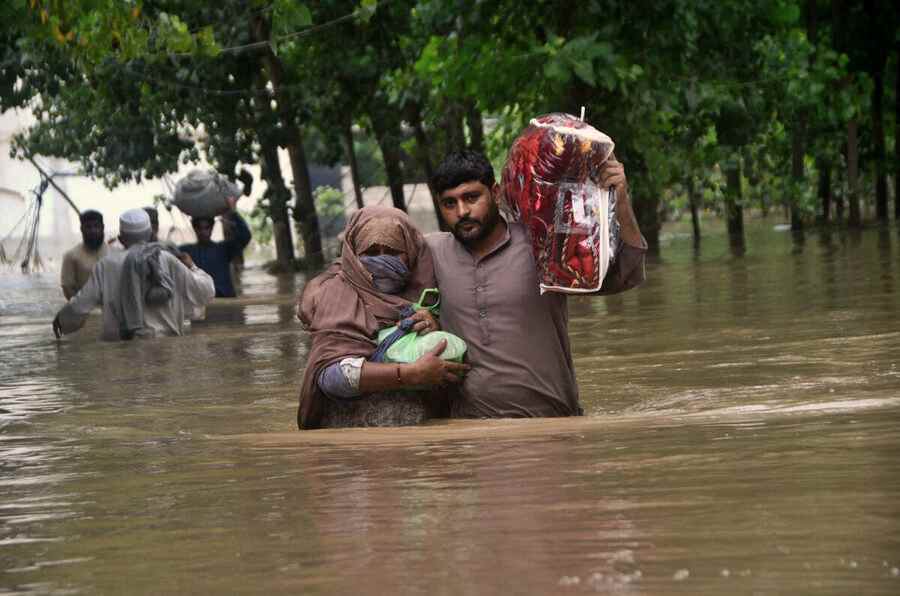
Impending health crisis
Being downstream on the Indus River, the southern parts of the country have witnessed swelling river waters flowing from the north. Pakistan’s limited dams and reservoirs are already overflowing and cannot be used to stop downstream flows.
Meanwhile, large-scale displacements and countries limited resources have led to fears of an impending health crisis.
According to the World Health Organisation, nearly 900 health facilities have been damaged due to floods in the country, 180 of them completely destroyed.
And with stagnant water everywhere preventing people from observing even a modicum of hygiene practices, stomach ailments and skin infections have become rampant.
According to the Sindh government, in August alone nearly 200,000 cases of acute watery diarrhoea and dysentery had been reported among children in flood-affected areas.
Given the state of affairs, Health Minister Abdul Qadir Patel [said][5] on Sunday that over 1,200 medical relief camps would be set up in more than 20 flood-hit districts this month to provide medical assistance to affected citizens.
SOURCE: INDEPENDENT PRESS AND NEWS AGENCIES
___________________________________________________________________________________________________________________________________________
FOLLOW INDEPENDENT PRESS:
TWITTER (CLICK HERE)
https://twitter.com/IpIndependent
FACEBOOK (CLICK HERE)
https://web.facebook.com/ipindependent
Think your friends would be interested? Share this story!


